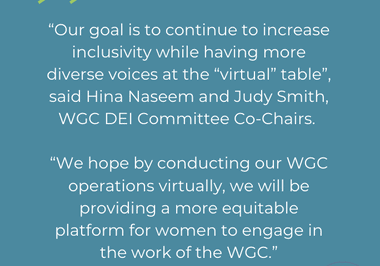STORY BY Marion Winik ILLUSTRATION BY Paige Vickers
The new book “The End of Men,” by Hanna Rosin, documents changes in womenʼs status around the world, from college campuses to Bible Belt communities to enclaves of urban 30-somethings in the Pacific Northwest to South Korea and India.
While it was once a brutal fact of life that boys were the preferred sex, the ground has shifted. For example, while it used to be assumed that letting people choose the sex of their children would cause a drastic majority of male babies, Rosin reports that “orders” for girls at sperm banks are running at 75 percent. This is apparently because now itʼs generally accepted that girls are easier to raise and do better in school. And after that – well, “having it all” in terms of career and family is no longer a pie in the sky but a realistic goal for young women – which has helped drive up the average age of marriage to 32.
While some people doubt Rosinʼs methods and conclusions, I felt thrilled by the book and immediately wanted
On the other hand, I wonʼt bother saving it for my 12-year-old daughter. The world Rosin describes is the world Jane is growing up in and takes for granted. Remaining traces of female subordination, like inequality in corporate pay and power, strike her as bizarre. This is not because she has been raised to think as a feminist. Itʼs because these things donʼt make sense in the world she knows. They donʼt fit into the picture.
Itʼs just beginning to hit me that the radical change between my motherʼs generation and mine will probably be no greater than those between mine and Janeʼs.
When I was growing up, few women worked outside the home; my own mom left a career in market research to have me and never went back. A couple of kids I knew had moms who were cashiers or secretaries, but this was more a source of shame than pride. I wore a dress to school every day from kindergarten until sixth grade, when the New Jersey public school system decided that girls could wear pants. (This was particularly welcome in the winter, when we shivered in tights at the bus stop and huddled near the door on the playground.) Though I was too young to attend the bonfire when bra burning was a fad, I was in high school when
Ms. magazine premiered. I took feminist history, sociology and literature classes in college and was deeply infatuated with the ideas they presented.
Most of the ideals I embraced became real in my life. But it’s not until I compare myself with Jane that I see that I am still running the beta version of the “Modern Woman” software.
Jane, now in seventh grade, wore a skirt to school for the first time this year – which, as Iʼll explain in a moment, was a power statement rather than a buckling to stereotype. The mothers of her classmates fall into almost every category except full-time traditional homemaker, and thereʼs a Nobel Prize winner among them. Far from feeling discriminated against, Jane is certain that she can pursue any career she wants. When I broke the news to her the other day that women are often paid less than men for the same work, she hardly believed me.
“You mean if they did the same job at the same company, they wouldnʼt get paid the same thing?” she said in shock. I wouldnʼt be surprised if her generation changes that, too.
When I asked Jane if there was a difference in the way boys and girls are treated at her school, she told me the girls are expected to be smarter and work harder. This seemed to her like something everyone knows, and it reminded me of another point in Rosinʼs book – that colleges now secretly apply affirmative action policies that favor male applicants so they donʼt end up with huge girl majorities.
Are the boys ever given preference? I asked. She tried hard to come up with something, then remembered an incident where her music teacher asked the boys to move piles of stacked chairs out from under the stage while the girls stayed in their seats.
“It was totally unfair,” she said. “We wanted to get up too!”
I asked her whether a “girly girl,” which is the term she would use to describe one who dresses in feminine clothes and rejects tomboyish pursuits, could also be a feminist. She looked at me quizzically, saying she thought girly girls were the biggest feminists of all “because they love being a girl, right?” So for her, wearing that skirt and reading fashion magazines and playing with lipstick is all feminism. Itʼs the new Katy Perry kind of feminism, where your candy-color makeup and ice-cream cone boobs are symbols of empowerment, not subjugation.
This relates to a point in Rosinʼs book I found quite surprising, even bizarre. Her chapter on the “hook-up culture” on campus asserts that rather than being victimized by one night stands and predatory boys, girls are driving the situation. They donʼt want the “ball and chain” of a boyfriend or husband and actively think of “hooking up” as a way to postpone commitment until they achieve their career goals.
Whether this will work out for them, I donʼt know – and I canʼt say I look forward to that environment for Jane. I canʼt imagine her sweet young heart becoming that hardened. She is a realist about guys, though. For example, I asked her whether she expected to split the work of the household 50/50 with her mate, she laughed at me. “Uh, based on what Iʼve seen?”
(This is what I mean about me being a beta version of the liberated woman: Iʼve been running around like a maniac taking care of everyone and everything every day of Janeʼs life, while the men in the house, young and old, do a little of this, a little of that, and quite a bit of neither.)
Janeʼs interpretation of the situation was hilarious. “If my husband is very, very competent and smart,” she said, “Iʼll let him do half. But I think Iʼll probably have to do more.”




